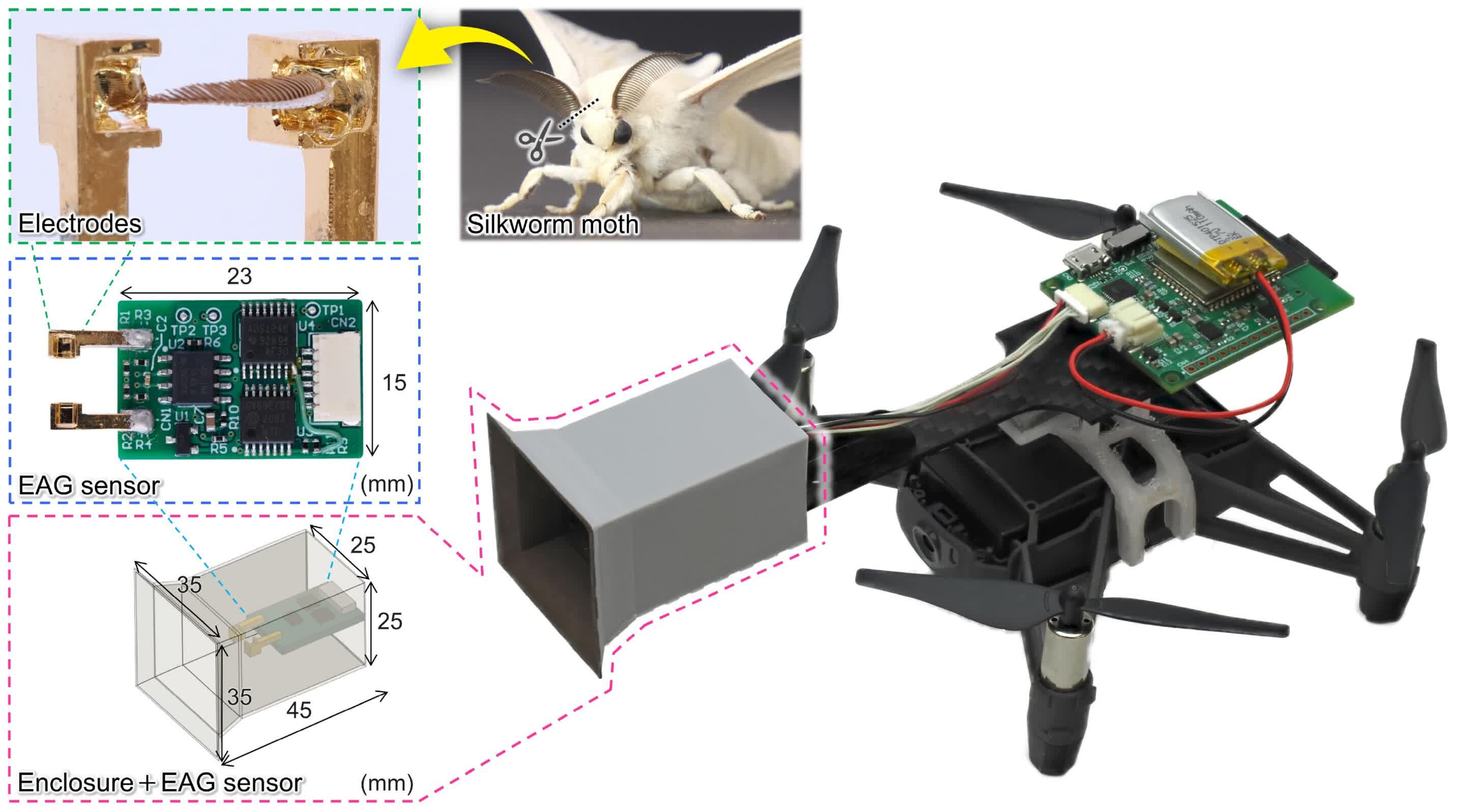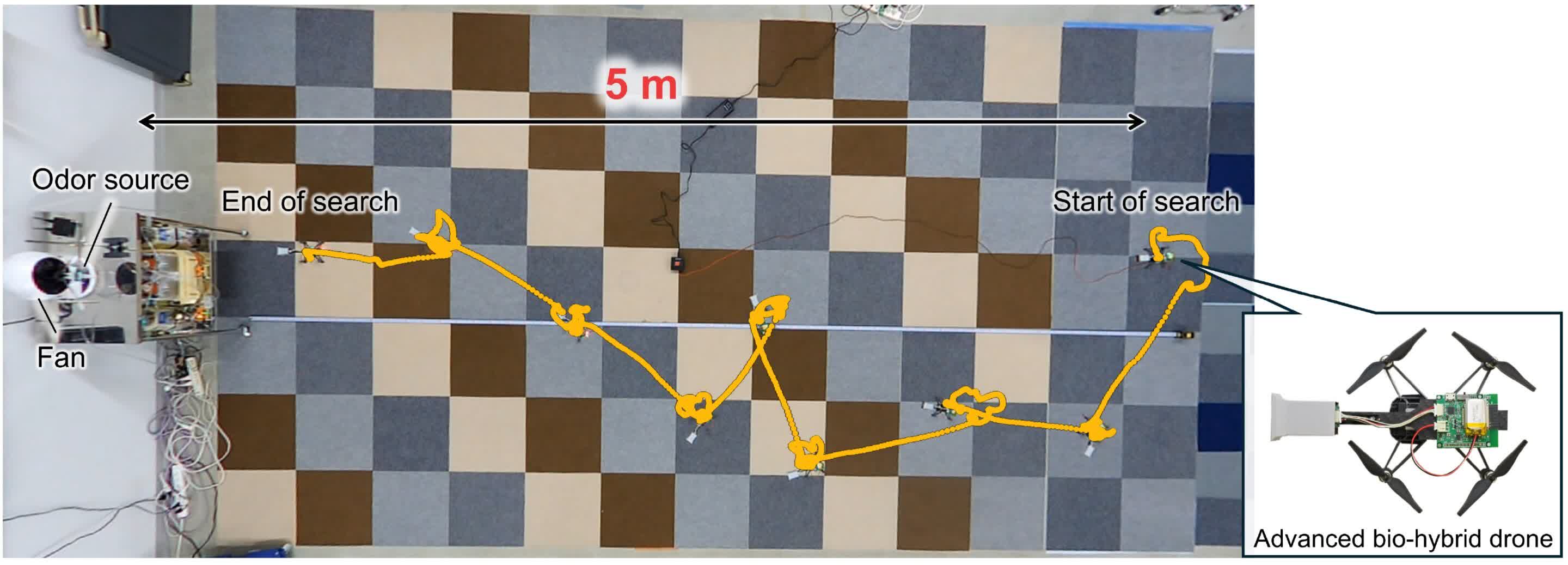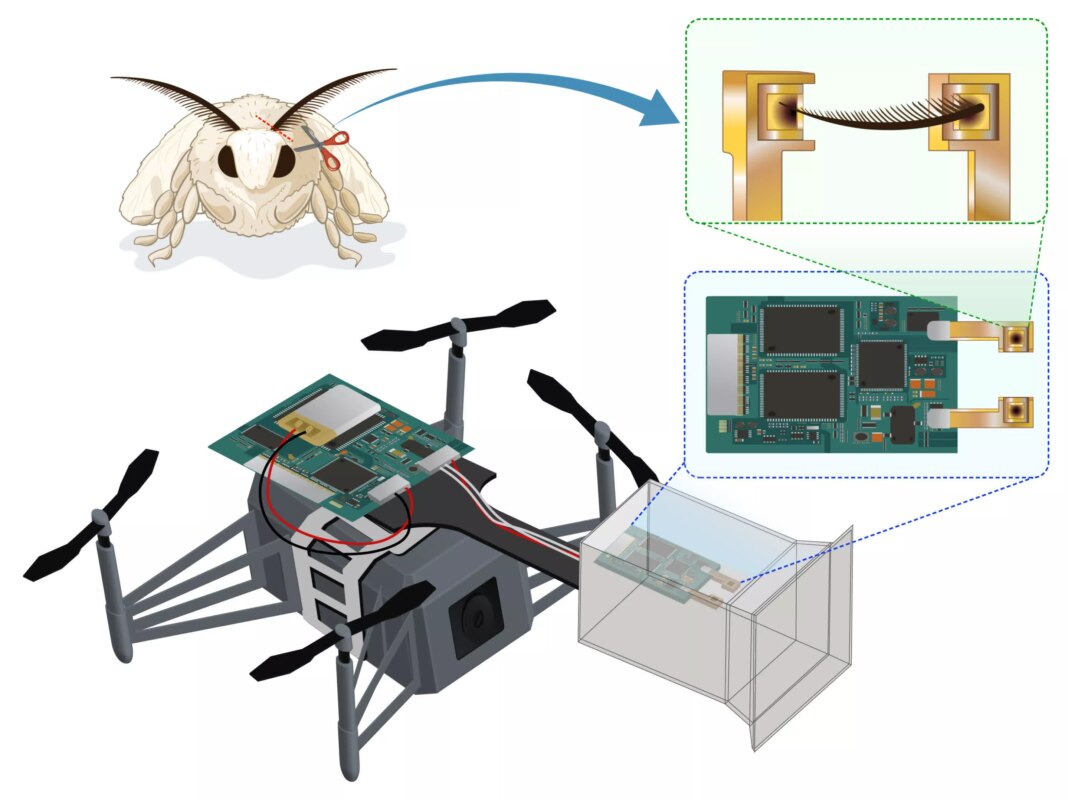In a nutshell: Researchers in Japan have merged robotic technology with the finely tuned senses of silk moths to create a bio-hybrid drone. By harnessing nature’s expertly evolved ability to track scents over long distances, this innovation could aid in disaster response efforts.
Traditional drones rely on visual sensors like cameras and lasers for navigation, but these can be unreliable in harsh conditions such as low light, dust storms, or wet environments. This poses a challenge when surveying disaster-stricken areas, where visibility may be compromised. Additionally, aerial surveillance can be inefficient when there’s no clear target to track.
To address these limitations, researchers took a creative approach – giving drones the ability to detect scents.
As TechXplore highlights, the project is led by Associate Professor Daigo Terutsuki of Shinshu University in collaboration with Chiba University. The innovative design involves carefully extracting the antennae of silkworm moths and attaching them to electrodes on an electroantennography (EAG) sensor, a system used to measure electrical signals from insect antennae in response to odors.

The male silkworm moth has an extraordinary ability to detect female pheromones from astonishing distances – sometimes spanning kilometers – to locate a mate. If it can track a potential partner from that far away, repurposing this skill to locate trapped humans could be a game-changer.
Previously, the research team developed a bio-hybrid prototype using insect antennae electrodes for odor detection. However, that version had a major limitation – it could only detect scents within a two-meter range, making it impractical for search-and-rescue missions.
To overcome this, the researchers devised a new approach, enhancing the system by replicating real insect behavior during scent tracking. At the core of this improvement is a ‘three-step rotation algorithm,’ which mimics how insects periodically pause while homing in on an odor plume.

The antennae interface has also undergone a major upgrade for improved performance. A newly designed funnel, combined with a conductive coating, helps reduce airflow resistance and electrical noise. These enhancements increase the bio-drone’s effective range to up to five meters.
Beyond disaster response, the researchers envision a wide range of real-world applications for this scent-tracking technology. It could be used to detect gas leaks, identify fires and hazardous materials, and even enhance security measures at airports and border checkpoints.
“Traditionally, search and rescue efforts have relied on manual visual searches due to the absence of a definitive technology capable of efficiently locating individuals in distress. The advanced bio-hybrid drone developed in this study has the potential to enable responders to rapidly locate survivors by tracking odors, ultimately saving more lives when every second counts,” Dr. Terutsuki concluded.


